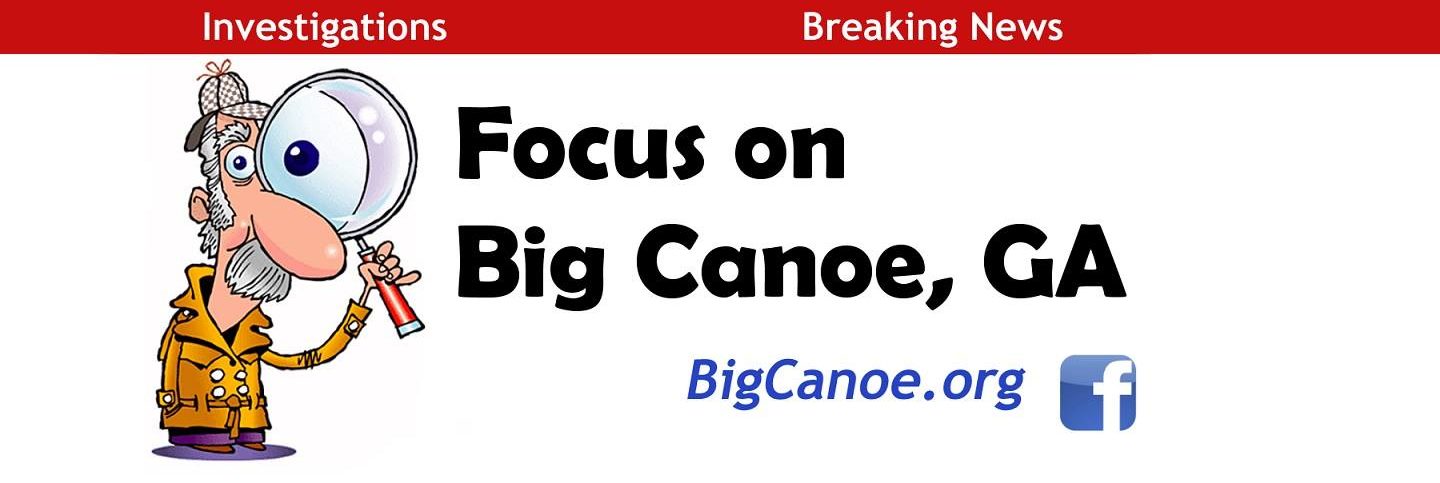
It is commendable that the POA President has sought to “clear the air” in the August edition of Smoke Signals by presenting leadership’s rationale behind several recent decisions. Unfortunately, the narrative regarding the Creek Nine golf course greens only causes additional confusion and opens new avenues of concern.
This writer’s previous article (1) referenced the Reserve Management Plan (RMP) prepared for the POA and required by Big Canoe covenants to support the following information which had been directly contradicted by the president.
- The Creek greens were renovated in 2000 at a cost of $480,000.
- Management estimated the useful life of this renovation to be 30 years.
- End of useful life and/or replacement date of this renovation is July 2030.
Further, information taken from the RMP and audited financial statements suggested that the cost of the renovation in 2000 had not been fully depreciated. (2)
After agreeing that the referenced Reserve Management Plan (RMP) is, in fact, required by Big Canoe covenants, the president goes on to say that “the reserve study is not the gospel. The reality is that this study is really not a study”. (3) Really? Now that is a most perplexing statement. It is difficult to determine if the president is continuing to contradict the above points or if an attempt is being made to trivialize, disregard or discredit the entire RMP as mandated by our covenants.
Perhaps this is the appropriate time to bring up the discussion of covenants. The particular amendment to Big Canoe covenants requiring the RMP or “Capital Reserve Study” (CRS) was created by a majority vote of BC property owners in 2010, tweaked in 2012, and remains in effect today. That amendment not only requires that a CRS/RMP be performed and updated every three to five years, but also establishes parameters for funding and management of the Capital Reserve Fund. Specifically, the covenant states that “the amount of the Reserve Fund shall be managed consistent with projected reserve requirements identified by the CRS.” (4) Unfortunately, it does not appear that this has been the case as the capital reserve fund has a present balance of only $2.7m. (5) It can not be determined if any deposits other than interest income have been made to the fund since year end 2016 as increases total only $151k. (6)
Looking back historically, immediately after receipt of the CRS/RMP, funding of the capital reserve fund was discussed in the September and October 2016 finance committee meetings (7) (8). A determination was made in the October meeting to provide the board with a recommendation regarding the amounts and mechanism for funding of the reserve. There is no mention of this recommendation in any board minutes that follow nor is there any documentation of followup discussions within the committee as minutes of the November 14, 2016 finance committee meeting are missing on the POA website.
In May 2018, the committee recommended a “renewed commitment to building additional capital reserve funds to meet anticipated and unanticipated future capital requirements”. Yet once again, there is no documentation of any followup discussions. At the January 2019 Board meeting, it was actually confirmed that NO contributions had been made to the capital reserve fund during the entire 2018 year, and it was not anticipated that any significant contributions would be made in 2019 as there was not sufficient cash available after operational expenses, debt service and capital expenditures. (9) It was noted that this issue would be revisited later in the year.
Now obviously, it takes property owner financial resources to maintain the reserve fund at an adequate level, which means that extreme care should be used in prioritizing the uses of monthly assessments. Especially assessments such as the extension of the $25 “special assessment” in 2017 which was rolled over into general funds and the large $20 assessment increase in 2019. To consume those dollars in administrative expenses that have increased $554k since year end 2016 (using the recently revised year end 2018 financial information) (10) (11) and ever larger food and beverage losses does not appear to be a judicious management of our financial resources. Likewise, this is why decisions to invest our resources in new (not replacement) capital purchases and Chambers and Bergin consulting fees prior to properly funding our reserve fund did not make sense. These examples represent dollars that could and should have been allocated to our capital reserve fund rather than being spent elsewhere. Understand – this is not about saying we should never do those things. It is about saying we should not have done those things NOW. Our leadership must establish SPENDING priorities, and they should do so now.
Meanwhile, we as property owners can not continue to stand by allowing our covenants to be violated. Capital funding requirements put in place by a vote of our property owners should not be cast aside in favor of other methods internally decided by our board. Leadership – these are our assessment dollars. Please manage them appropriately rather than looking to the property owners for additional sources of revenue.
Please feel free to distribute, share and pass this on. Likewise, if you have questions or would like further discussion, I can be contacted at thepcrosses@gmail.com.
Patricia Cross
10438 Big Canoe
References:
- Focus on Big Canoe – Letter to the Editor: Leadership’s words appear untrue – July 14, 2019
- Big Canoe Property Owners Association – Reserve Management Plan, August 7, 2016
(Login>POA>Reports & Studies>Reserve Study 2016)
- Second Amendment to Amended and Restated General Declaration of Covenants and Restrictions of the Big Canoe Property Owners Association, Inc. and Big Canoe Company, August 21, 2010 (Pg 3; Section 13c)
(Login>POA>Governing Documents>Covenants>Covenants Capital Reserve 2010)
- POA Financial Package, June 2019, pg. 12 – Balance Sheet
(Login>POA>Financials>Summary of Operations>June 2019)
- POA Financial Package, December 2016, pg. 5 – Balance Sheet
- January 2019 Board Meeting Video at 11:20
(Login>POA>Meetings>Video>January 2019 Board Meeting)
- POA “Final” Financial Statement, December 2018, Income from Operations
(Login>POA>Financials>Summary of Operations>December 2018>pg. 2)




Be the first to comment